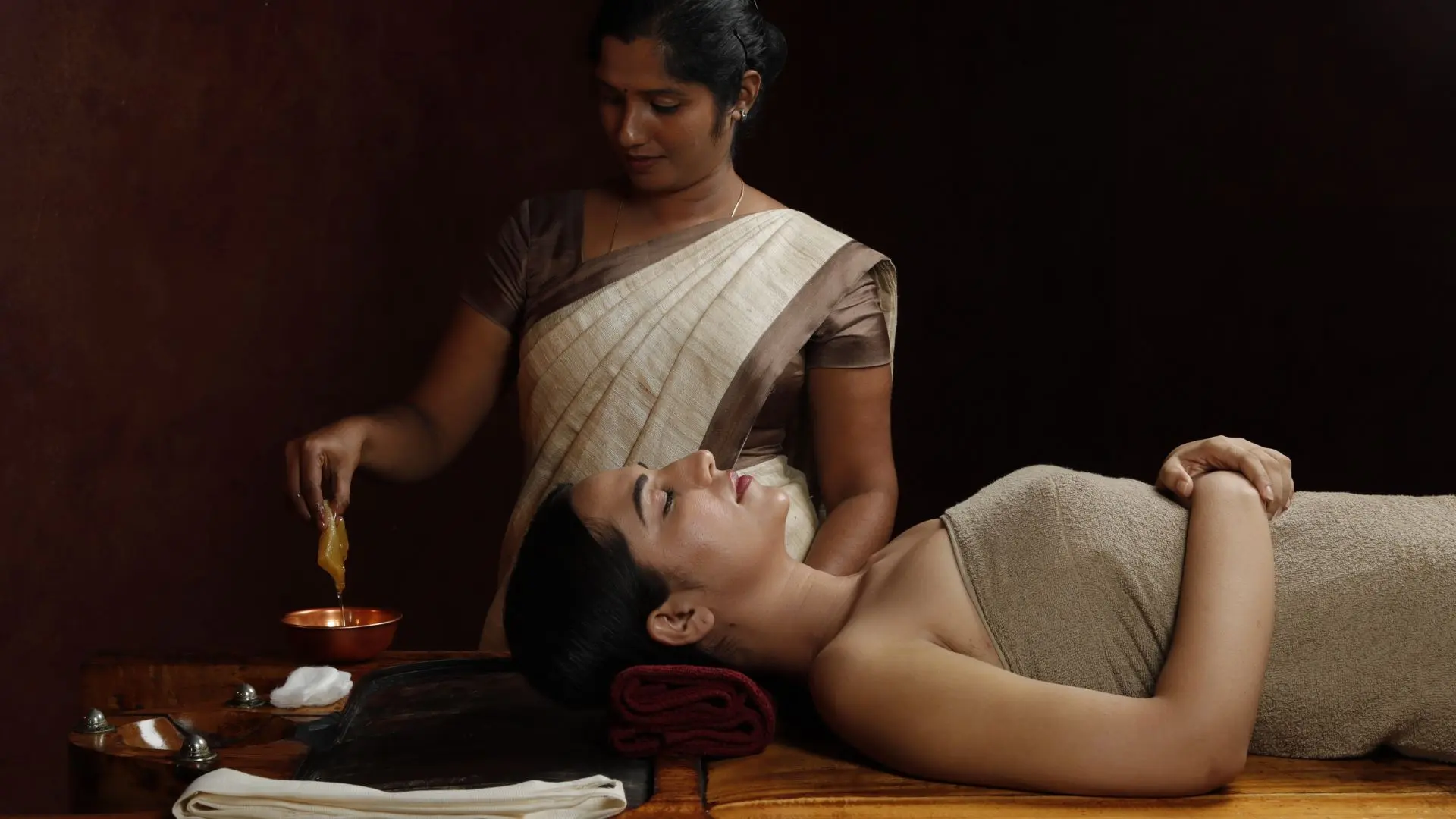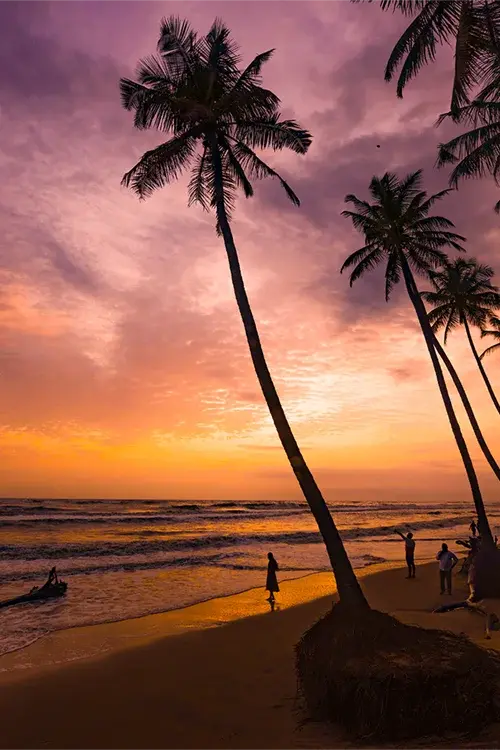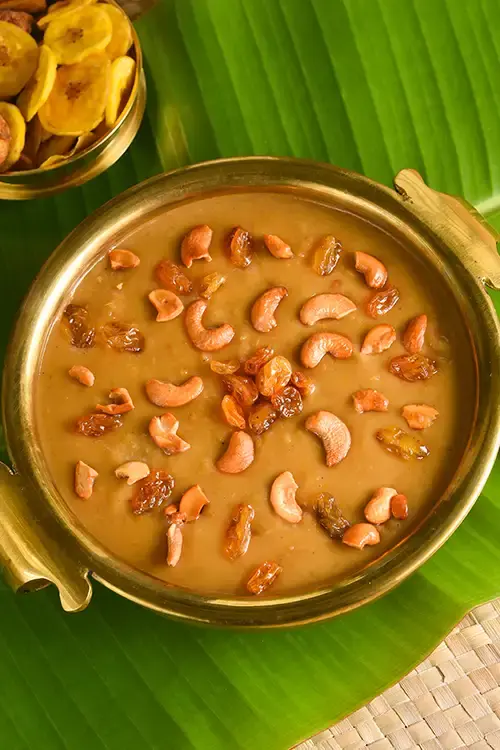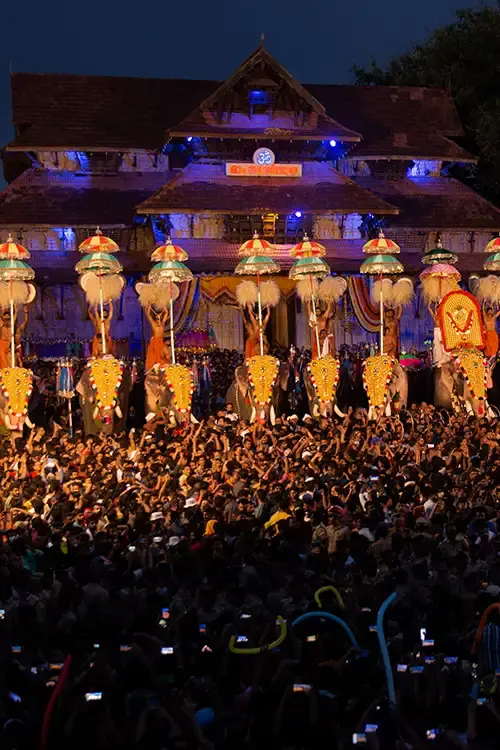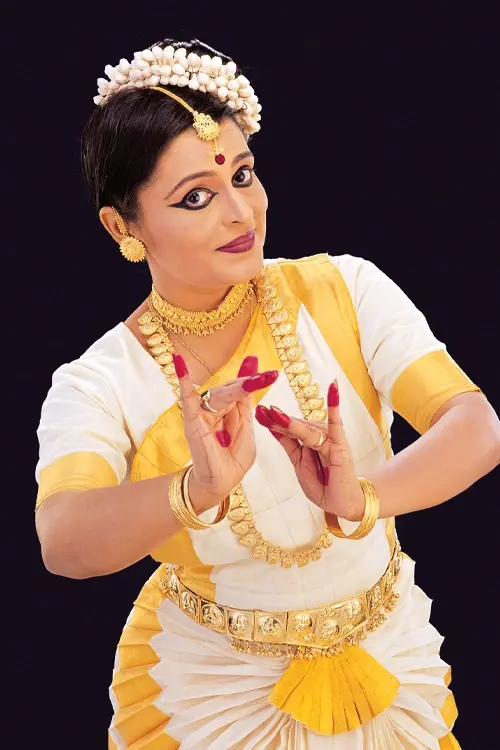FAQ
Theyyam Dance Forms and Their Meanings
Theyyam, a sacred dance and ritual art form from Kerala, is a powerful expression of spirituality and culture. Performed by Theyyam artistes who embody deities, mythological characters or ancestors, each Theyyam holds a unique significance rooted in local folklore, mythology or religious beliefs.
With over 400 distinct types, each Theyyam features its own style, music and choreography. Some of the most prominent Theyyams include:
• Raktha Chamundi: Known for its fierce and fiery presence, this Theyyam represents strength and defiance.
• Kari Chamundi: Associated with healing, this Theyyam is believed to cure ailments and protect devotees.
• Muchilottu Bhagavathy: A revered form of the mother goddess.
• Wayanadu Kulavan: Celebrates local folklore and myths of the region.
• Gulikan and Pottan: Represent divine messengers and ancestral spirits, often embodying protection and justice.
• Theechamundi: Features fire in its hair, symbolizing destructive power and purification.
Theyyam performers wear elaborate makeup, majestic headdresses, and ornate costumes adorned with hoods, breastplates, garlands and intricate face paintings. Each Theyyam’s attire is meticulously handcrafted to reflect the deity or spirit being portrayed.
Performances typically begin with slow, deliberate movements, and progress in intensity as the artiste enters a trance-like state. In the climax, the performer blesses the audience, often showering rice grains as a symbol of prosperity and protection.
Theyyam is predominantly performed in the Kannur and Kasaragod districts from December to April. Key locations for annual performances (Kaliyattam) include Karivalloor, Nileswaram, Kurumathoor, Cherukunnu, Ezhom and Kunnathoorpadi. These events draw large crowds, offering a profound connection to Kerala’s spiritual and cultural heritage.
Theyyam is not merely a performance but a sacred ritual that bridges the divine and human realms, leaving viewers in awe of its intensity, artistry and spiritual significance.
